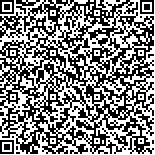| 引用本文: | 吴诗颖,岳岑,孙洲亮.多基因交互作用对急性脑卒中患者发生阿司匹林抵抗的预测价值[J].中国现代应用药学,2022,39(6):800-805. |
| WU Shiying,YUE Cen,SUN Zhouliang.Predictive Value of Multi-gene Interaction on Aspirin Resistance in Patients with Acute Stroke[J].Chin J Mod Appl Pharm(中国现代应用药学),2022,39(6):800-805. |
|
| |
|
|
| 本文已被:浏览 1632次 下载 863次 |

码上扫一扫! |
|
|
| 多基因交互作用对急性脑卒中患者发生阿司匹林抵抗的预测价值 |
|
吴诗颖1,2, 岳岑3, 孙洲亮1,2
|
|
1.厦门大学附属第一医院, 药剂科, 福建 厦门 361003;2.福建医科大学药学院, 福州 350000;3.厦门大学附属第一医院, 神经内科, 福建 厦门 361003
|
|
| 摘要: |
| 目的 探讨6种基因单核苷酸多态性(single nucleotide polymorphisms,SNPs)的交互作用对急性脑卒中患者发生阿司匹林抵抗(aspirin resistance,AR)的预测价值。方法 收集病案系统中2018年1月1日-2020年4月30日于厦门大学附属第一医院住院的急性脑卒中患者,根据最大血小板聚集率分为AR组和阿司匹林敏感(aspirin sensitivity,AS)组。选取COX-1(rs1330344、rs3842788)、GPⅡb(rs5911)、GPIBA(rs6065)、HO-1(rs2071746)和PEAR1(rs12041331)共6个SNPs,采用SPSS统计软件和广义多因子降维法(generalized multifactor dimensionality reduction,GMDR)进行分析。结果 92例急性脑卒中患者中AR组15例(16.3%),AS组77例(83.7%),2组之间各SNPs基因型频率分布差异无统计学意义。GMDR分析显示,rs2071746、rs12041331和rs1330344三阶基因交互模型为AR风险的最优模型(交叉检验一致性为10/10,符号检验值为P=0.010 7),Logistics回归分析结果表明,上述3种SNPs的交互作用可增加AR风险[OR=30.917,95% CI (3.842,248.781),P=0.001]。结论 rs2071746、rs12041331和rs1330344的多基因交互作用增加了急性脑卒中患者AR发生的风险。 |
| 关键词: 脑卒中 阿司匹林抵抗 基因交互作用 |
| DOI:10.13748/j.cnki.issn1007-7693.2022.06.014 |
| 分类号:R969.4 |
| 基金项目: |
|
| Predictive Value of Multi-gene Interaction on Aspirin Resistance in Patients with Acute Stroke |
|
WU Shiying1,2, YUE Cen3, SUN Zhouliang1,2
|
|
1.Department ofPharmacy, The First Affiliated Hospital of Xiamen University, Xiamen 361003, China;2.School of Pharmaceutical Sciences, Fujian Medical University, Fuzhou 350000, China;3.Department of Neurology, The First Affiliated Hospital of Xiamen University, Xiamen 361003, China
|
| Abstract: |
| OBJECTIVE To explore the predictive value of six genes single nucleotide polymorphisms(SNPs) and their interaction on aspirin resistance(AR) in patients with acute stroke. METHODS The patients with acute stroke were enrolled in the medical record system who were hospitalized in The First Affiliated Hospital of Xiamen University from January 1, 2018 to April 30, 2020. They were divided into AR and aspirin sensitive(AS) group according to the max aggregation ratio. SPSS and generalized multifactor dimensionality reduction(GMDR) were performed to analyze the relationship between AR and six SNPs, including COX-1(rs1330344, rs3842788), GPⅡb(rs5911), GPIBA(rs6065), HO-1(rs2071746) and PEAR1(rs12041331). RESULTS Among the 92 patients, AR group was detected in 15 patients(16.3%), and AS group was detected in 77 patients(83.7%). There were no significant differences in the genotype distributions of the SNPs between two groups. GMDR analysis showed that three-locus interaction model(rs2071746, rs12041331 and rs1330344) was the best model, and the cross-validation consistency was 10/10, and sign test value was 0.010 7. The Logistic regression analysis showed that the interaction of the above three SNPs could increase the risk of AR[OR=30.917, 95%CI(3.842, 248.781), P=0.001]. CONCLUSION The gene-gene interaction among rs2071746, rs12041331 and rs1330344 may confer higher risk for AR in patients with acute stroke. |
| Key words: stroke aspirin resistance gene interaction |
|
|
|
|
